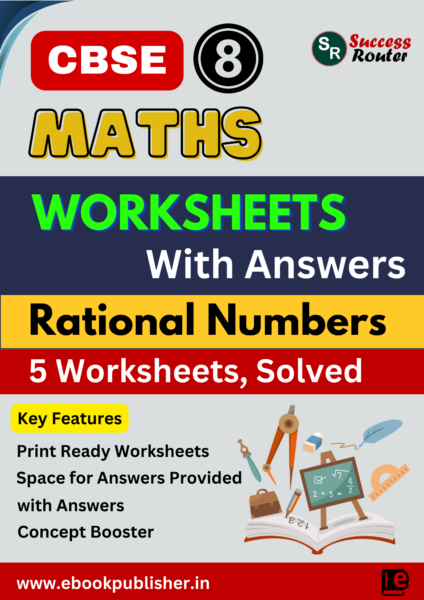Here we are providing case study questions for CBSE Class 8 Maths. The list of chapters is given below. Student can access the question by clicking on the chapter link.
- Case Study Questions for Class 8 Maths Chapter 16 Playing with Numbers
- Case Study Questions for Class 8 Maths Chapter 15 Introduction to Graphs
- Case Study Questions for Class 8 Maths Chapter 14 Factorisation
- Case Study Questions for Class 8 Maths Chapter 13 Direct and Inverse Proportion
- Case Study Questions for Class 8 Maths Chapter 12 Exponents and Power
- Case Study Questions for Class 8 Maths Chapter 11 Mensuration
- Case Study Questions for Class 8 Maths Chapter 10 Visualising Solid Shapes
- Case Study Questions for Class 8 Maths Chapter 9 Algebraic Expressions and Identities
- Case Study Questions for Class 8 Maths Chapter 8 Comparing Quantities
- Case Study Questions for Class 8 Maths Chapter 7 Cube and Cube Roots
- Case Study Questions for Class 8 Maths Chapter 6 Squares and Square Roots
- Case Study Questions for Class 8 Maths Chapter 5 Data Handling
- Case Study Questions for Class 8 Maths Chapter 4 Practical Geometry
- Case Study Questions for Class 8 Maths Chapter 3 Understanding Quadrilaterals
- Case Study Questions for Class 8 Maths Chapter 2 Linear Equations in One Variable
- Case Study Questions for Class 8 Maths Chapter 1 Rational Numbers

Download More Case Study Questions for Class 8
- Introduction to Graphs Class 8 Case Study Questions Maths Chapter 13
- Factorisation Class 8 Case Study Questions Maths Chapter 12
- Direct and Inverse Proportions Class 8 Case Study Questions Maths Chapter 11
- Exponents and Powers Class 8 Case Study Questions Maths Chapter 10
- Mensuration Class 8 Case Study Questions Maths Chapter 9
- Algebraic Expressions and Identities Class 8 Case Study Questions Maths Chapter 8
- Comparing Quantities Class 8 Case Study Questions Maths Chapter 7
- Cube and Cube Roots Class 8 Case Study Questions Maths Chapter 6
- Square and Square Roots Class 8 Case Study Questions Maths Chapter 5
- Data Handling Class 8 Case Study Questions Maths Chapter 4
- Understanding Quadrilaterals Class 8 Case Study Questions Maths Chapter 3
- Linear Equations in One Variable Class 8 Case Study Questions Maths Chapter 2
- Rational Numbers Class 8 Case Study Questions Maths Chapter 1
Chapter List
Chapter 1 Rational Numbers
Chapter 2 Linear Equations in One Variable
Chapter 3 Understanding Quadrilaterals
Chapter 4 Practical Geometry
Chapter 5 Data Handling
Chapter 6 Squares and Square Roots
Chapter 7 Cubes and Cube Roots
Chapter 8 Comparing Quantities
Chapter 9 Algebraic Expressions and Identities
Chapter 10 Visualising Solid Shapes
Chapter 11 Mensuration
Chapter 12 Exponents and Powers
Chapter 13 Direct and Indirect proportions
Chapter 14 Factorisation
Chapter 15 Introduction to Graphs
Chapter 16 Playing with Numbers
Deleted Chapter for Session 2023-24
Chapter 4, Chapter 10 and Chapter 16 are not in syllabus for session 2023-24.
What are Case Study Questions in CBSE Class 8 Maths?
Case based questions are questions that require students to analyze a hypothetical situation or scenario. These types of questions are designed to test a student’s ability to apply their knowledge and understanding of a particular topic to a real-life situation.
How to Solve Case Study Questions for CBSE Class 8 Maths?
To tackle Case Study-Based Questions in Class 8 Maths, students need to carefully observe and analyze the provided information or data. When approaching these questions, it’s crucial to read the passage thoroughly and then proceed to solve them.
When dealing with Class 8 Maths Case Study questions, an effective strategy is to identify and highlight key information or given data. This practice will prove beneficial when formulating the final answers.
A Case Study in Class 8 Maths usually consists of 4 to 5 questions that are answered in a multiple-choice question (MCQ) format. While addressing these MCQs, it’s advisable for students to closely read the paragraph, as it might contain hints related to the discussed topics.
Prior to solving Case Study type questions, it’s recommended to refer to the CBSE Syllabus. This helps in revisiting and reinforcing previous learnings, enhancing preparation and confidence.
By following these simple yet effective steps, students can approach Class 8 Maths Case Study questions with a clearer understanding and better problem-solving skills. This approach not only aids in academic success but also contributes to a deeper grasp of mathematical concepts.
Understanding Case Study Questions in CBSE Class 8 Maths
Case study questions have emerged as a dynamic and engaging approach within the CBSE Class 8 Maths curriculum. These questions deviate from traditional problem-solving by presenting students with real-world scenarios that require the application of mathematical concepts. In essence, case study questions bridge the gap between theoretical knowledge and practical application, fostering a deeper understanding of mathematics.
Exploring the Concept of Case Study Questions
Case study questions involve presenting students with contextualized problems that mimic situations they might encounter in their daily lives. These scenarios are designed to challenge students to think critically, analyze data, and formulate solutions using mathematical principles. By immersing students in such scenarios, educators aim to nurture their ability to solve complex problems in various contexts.
Importance of Case Study Questions in Mathematics Learning
The significance of case study questions lies in their ability to cultivate practical problem-solving skills. Unlike traditional exercises that often focus solely on mathematical manipulation, case studies require students to apply their knowledge to authentic situations. This application not only enhances their comprehension of mathematical concepts but also equips them with valuable life skills, as they learn to approach challenges systematically and logically.
How Case Study Questions Differ from Traditional Problems
The fundamental distinction between case study questions and conventional math problems lies in their context-driven nature. While traditional problems tend to be abstract and formulaic, case study questions introduce variables, uncertainty, and real-world relevance. This dynamic approach encourages students to think multidimensionally, as they must consider factors beyond the mathematical equations themselves.
Benefits of Using Case Study Questions for CBSE Class 8 Maths
The adoption of case study questions in CBSE Class 8 Maths curriculum brings forth a multitude of benefits that extend beyond traditional teaching methods. These advantages stem from the unique nature of case study questions, which encourage active engagement, real-world application, and the development of analytical skills.
Fostering Critical Thinking and Problem-Solving Skills
Case study questions compel students to approach problems from various angles, dissecting complex scenarios and extracting pertinent information. This process cultivates critical thinking by encouraging students to analyze, evaluate, and synthesize data to arrive at well-considered solutions. By navigating through intricate case studies, students hone their ability to tackle multifaceted problems that mirror real-life challenges.
Real-world Application of Mathematical Concepts
One of the paramount advantages of case study questions is their relevance to everyday situations. Students encounter mathematical concepts in action, witnessing firsthand how these principles are embedded in various scenarios. This exposure not only deepens their understanding of theoretical concepts but also helps them appreciate the practical utility of mathematics in diverse contexts.
Enhancing Analytical Abilities through Practical Scenarios
Case study questions promote the development of analytical skills by requiring students to interpret data, identify patterns, and derive meaningful insights. As students engage with intricate case studies, they refine their ability to discern crucial information from irrelevant details, strengthening their capacity to make informed decisions—a skill applicable not only in mathematics but also in various aspects of life.











